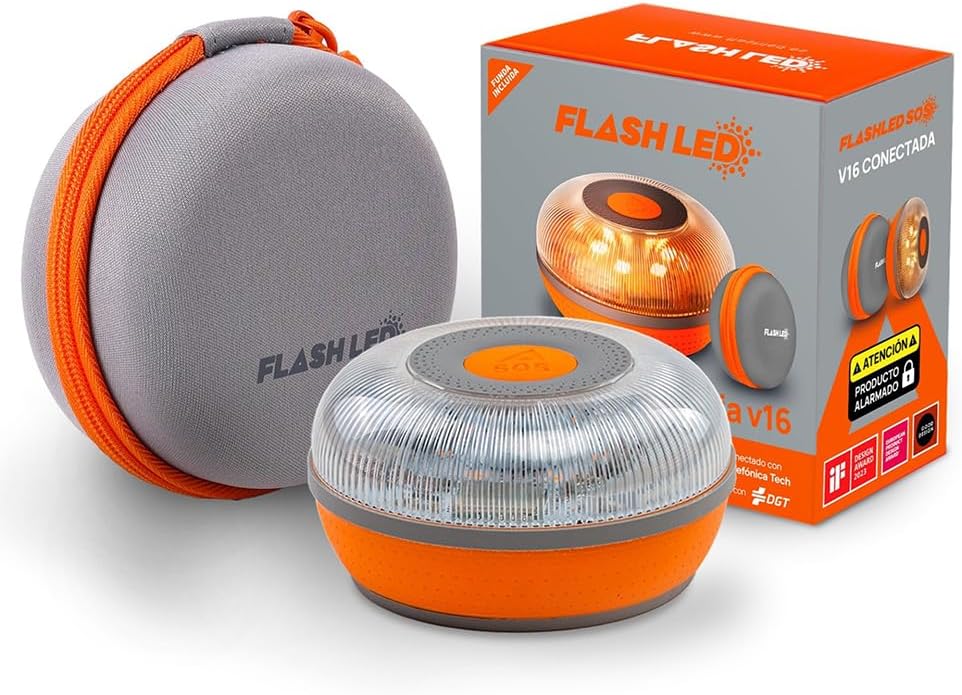Spain’s traffic authority has announced a significant update to its breakdown laws: starting 1 January 2026, all vehicles on the roads must have and use a V-16 emergency beacon instead of the traditional warning triangles. This change aims to minimize accidents and reduce fatalities caused by drivers leaving their vehicles on busy roads.

The V-16 is a small flashing amber light that attaches to the roof of a car to alert oncoming traffic. Importantly, it can be turned on from inside the vehicle, keeping drivers safe. These lights emit a 360-degree flash visible from hundreds of meters away, making stranded cars much easier to see in low visibility or at night.
Geolocation built in
All approved V-16 beacons will include built-in geolocation. When activated, they’ll transmit the vehicle’s exact position via the DGT 3.0 cloud system, giving emergency services real-time information to reach stranded drivers faster. The data will also feed into Spain’s wider connected-road network, allowing other road users to be warned automatically through navigation systems.
Until 31 December 2025, drivers can still use either warning triangles or a V-16. But from the start of 2026, triangles will no longer be legal, and failing to carry a compliant beacon could result in fines between €80 and €200.
What drivers should do now
Motorists are advised to buy a DGT-approved beacon well ahead of the deadline. Non-certified versions are already on sale, but these may not meet the full specification, particularly regarding connectivity. Owners should also familiarise themselves with how to fit and activate the beacon to avoid confusion during an emergency.
According to the DGT, the rollout is ‘a decisive step forward for road safety,’ aiming to cut roadside fatalities and improve response times for breakdowns and collisions. Drivers from abroad, including holidaymakers visiting Spain, are also expected to comply once the law takes effect.
What this means for you
If you’re driving to Spain after 1 January 2026, you’ll need a V-16 beacon in your vehicle instead of the old-style warning triangle. UK drivers taking their own cars across the Channel will be expected to follow the same rule once in Spanish territory.
The devices are inexpensive, easy to store and far safer than triangles, especially on motorways or in poor light. For anyone who’s ever changed a tyre with lorries thundering past, being able to stay in the car is a big safety upgrade.
It’s likely other European countries will follow Spain’s lead, so investing in a beacon now could future-proof your travel kit for years to come.
These are available to purchase in the UK for £53.99.

We may receive a commission if you purchase a product using the affiliate links on any page of this website. This is at no cost to the purchaser, however does support our website and helps us to continue to build with more great content.

Leave a Reply